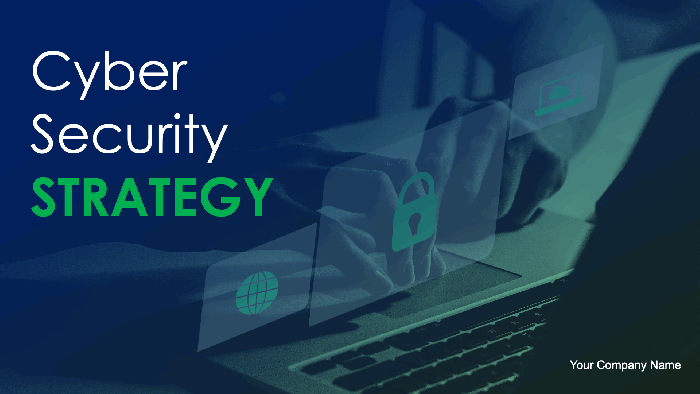Revamp your security strategy with containers APAC. The Asia Pacific region faces unique cybersecurity challenges, and containerization offers a powerful solution. This in-depth look examines the current security landscape, highlighting specific APAC concerns and detailing how containers can be leveraged to enhance your security posture. We’ll delve into best practices, vulnerabilities, and practical implementation strategies, all tailored to the unique needs of the APAC market.
From understanding the regulatory landscape to implementing advanced security techniques and continuous monitoring, we’ll cover the entire spectrum of container security in APAC. This comprehensive guide equips you with the knowledge and tools necessary to navigate the complex world of container security in your region.
Introduction to Container Security in APAC

The Asia Pacific (APAC) region is a dynamic and rapidly evolving market, characterized by a diverse range of industries and technological adoption rates. This rapid growth presents both exciting opportunities and unique security challenges. Understanding the nuances of the APAC security landscape and leveraging container security best practices is critical for organizations deploying applications in this region.Containerization has emerged as a popular method for deploying applications, offering portability, scalability, and efficiency.
However, this shift towards containerization necessitates a robust security strategy to mitigate potential vulnerabilities. The APAC region presents specific challenges in this regard, requiring tailored security approaches to address the evolving threats and compliance requirements.
Current Security Landscape in APAC
The APAC region’s security landscape is diverse, reflecting the varying levels of digital maturity and regulatory environments across different countries. While some markets have advanced cybersecurity practices, others are still catching up. This disparity necessitates a nuanced approach to security, considering regional differences in threat models, regulatory compliance, and technological adoption. For example, countries like Singapore and Australia often lead in cybersecurity maturity, while others might have more nascent approaches to container security.
Unique Security Challenges in APAC
Several unique security challenges impact the APAC region’s container security posture. These include:
- Diverse regulatory environments:
- Varying levels of cybersecurity expertise:
- Sophisticated threat actors:
- Growing adoption of cloud services:
Different countries have varying data privacy and security regulations, impacting how organizations handle sensitive data and implement security controls.
The availability and expertise of cybersecurity professionals in the region vary, requiring a focus on training and knowledge sharing.
APAC is a target for various cyberattacks, requiring proactive measures to detect and respond to threats effectively.
Cloud adoption is rapidly increasing, and securing containers deployed in cloud environments requires specific strategies to protect against cloud-native vulnerabilities.
Benefits of Containerization in APAC
Containerization offers several advantages for organizations in APAC:
- Increased efficiency:
- Enhanced portability:
- Improved resource utilization:
- Simplified development and operations:
Containerization enables faster application deployment and scaling, crucial for meeting the demands of dynamic markets.
Containerized applications are easily portable across different environments, simplifying deployment and management.
Containers allow for optimized resource allocation, maximizing the efficiency of computing infrastructure.
The standardized container runtime environments streamline development and operations workflows.
Best Practices for Securing Containerized Applications in APAC
Effective container security in APAC demands a comprehensive approach:
- Implement strong container image scanning:
- Enforce principle of least privilege:
- Employ robust access control mechanisms:
- Use secure container orchestration platforms:
Regularly scan container images for vulnerabilities before deployment.
Grant containers only the necessary permissions to perform their functions.
Revamping your security strategy with containers in APAC is crucial. Modern applications often rely on lightweight containers for efficiency, but securing these environments requires a robust strategy. This is where innovative tools like those used in the threads polls gifs app can offer some inspiration for streamlining workflows. Implementing strong container security measures is paramount for a secure and reliable APAC infrastructure.
Implement strong access controls to prevent unauthorized access to containers.
Choose platforms with strong security features and compliance certifications.
Common Container Security Vulnerabilities
Understanding common vulnerabilities is crucial for developing a robust security strategy:
| Vulnerability Type | Description | Example |
|---|---|---|
| Image Manipulation | Unauthorized modifications to container images | Tampering with image files to introduce malicious code. |
| Container Escape | Unauthorized access to the host system from within the container | Exploiting vulnerabilities in the container runtime to gain access to the host operating system. |
| Insufficient Access Control | Containers with excessive permissions | Running containers with root privileges when less restrictive permissions suffice. |
| Network Security Misconfigurations | Improperly configured networking | Exposing containers to unnecessary network traffic. |
Container Security Strategy
Containerization has revolutionized application development and deployment, offering agility and efficiency. However, this shift brings unique security challenges, particularly in the diverse and rapidly evolving landscape of the Asia-Pacific (APAC) region. A robust container security strategy is crucial for ensuring the integrity and confidentiality of applications and data in this region.
Importance of a Robust Security Strategy
A robust container security strategy is essential to mitigate the inherent risks associated with containerized applications. This involves implementing security controls at every stage of the container lifecycle, from build and deployment to runtime and updates. Effective strategies reduce vulnerabilities, prevent unauthorized access, and safeguard sensitive data within the containerized environment.
Security Considerations for Containerized Deployments in APAC Countries
Different APAC countries have varying regulatory and compliance landscapes, influencing container security strategies. Understanding these nuances is critical for organizations deploying containerized applications in the region. For example, stringent data privacy regulations in countries like Singapore and Australia demand meticulous security measures to protect sensitive information.
- Singapore: The Personal Data Protection Act (PDPA) necessitates stringent data protection measures. Organizations must ensure containerized applications comply with these regulations by implementing robust access controls, encryption, and logging mechanisms.
- Australia: The Privacy Act 1988 and other data protection laws mandate organizations to implement security measures. Containers must adhere to these requirements, which involve data encryption, secure access control, and audit trails.
- India: The Information Technology Act (ITA) and other relevant regulations dictate compliance for data security and privacy. Containers must be configured and managed to satisfy these regulations, including implementing strong access control and logging.
Comparison of Container Security Best Practices Across APAC Regions
While common best practices exist, regional variations in security postures and regulatory environments lead to nuanced approaches. For instance, the emphasis on security auditing and compliance reporting may differ between countries, requiring adaptable strategies.
- Japan: A strong emphasis on secure coding practices and incident response is prevalent, influenced by the nation’s meticulous approach to information security.
- China: Organizations must carefully navigate the unique regulatory environment and tailor security practices to align with local laws and policies. This includes robust security measures and compliant processes.
- Southeast Asia: Emerging economies often face a challenge balancing security needs with operational efficiency. A pragmatic approach focusing on cost-effective solutions is crucial.
Regulatory and Compliance Requirements
Containerized applications must adhere to various regulatory and compliance standards in APAC. This includes, but is not limited to, data privacy regulations, industry-specific security standards, and regional compliance mandates.
Container Orchestration Platforms and Their Security Features
Different container orchestration platforms offer varying levels of security features. The choice of platform should align with the specific security requirements of the organization and the regulatory landscape. Consideration of platform-specific security features and functionalities is crucial for successful deployments.
| Container Orchestration Platform | Security Features |
|---|---|
| Kubernetes | Role-based access control (RBAC), network policies, pod security policies, image scanning, and security auditing. |
| Docker Swarm | Built-in security features like image signing, access control, and network isolation. Strong security is achievable through configuration and extensions. |
| Mesosphere DC/OS | Provides security features like authentication, authorization, and access control mechanisms, with integration options for other security tools. |
Implementing Container Security Measures
Implementing a robust container security strategy in the APAC region requires a multifaceted approach that addresses the unique challenges and opportunities presented by the diverse landscape. This involves careful planning, proactive measures, and a continuous improvement cycle to mitigate risks effectively. The security posture needs to be tailored to the specific needs of individual organizations, considering factors like regulatory compliance, industry standards, and the unique characteristics of the containerized applications.Container security isn’t just about technology; it’s about establishing a culture of security within the development lifecycle.
This includes educating developers on secure coding practices, integrating security testing into the CI/CD pipeline, and fostering a collaborative approach among security, development, and operations teams. This ensures that security is embedded into the fabric of the containerization process, rather than being an afterthought.
Steps in Implementing a Container Security Strategy
A well-defined container security strategy involves a series of steps, from initial assessment to ongoing maintenance. These steps should be iterative, allowing for adaptation and improvement as new threats and vulnerabilities emerge.
- Conduct a thorough security assessment: Identify existing vulnerabilities in the infrastructure and applications, analyze the current security posture, and determine the level of risk. This often involves reviewing current security policies, analyzing existing tools, and assessing the skills and experience of the team.
- Establish a comprehensive security policy: Create a documented policy that Artikels the security controls, procedures, and responsibilities for securing containerized applications. This should encompass guidelines for image creation, storage, deployment, and ongoing management.
- Implement automated security tools: Utilize tools for vulnerability scanning, image analysis, and compliance checking to streamline security tasks and reduce manual effort. This will improve the efficiency of the security process, and reduce the time needed to respond to vulnerabilities.
- Train developers and operations teams: Provide training on secure coding practices, container security best practices, and incident response procedures to ensure everyone understands their role in maintaining a secure container environment.
- Establish a continuous monitoring and improvement process: Implement continuous monitoring and logging to detect and respond to security incidents promptly. Regularly review and update security policies and procedures to address evolving threats.
Tools and Technologies for Container Security
Container security relies on a combination of tools and technologies that work in concert to provide a robust defense against threats. Choosing the right tools depends on the specific needs and resources of the organization.
- Container Image Scanners: Tools like Anchore Engine, Clair, and Trivy scan container images for vulnerabilities and malware. These tools examine the container images for known vulnerabilities, ensuring that only secure images are deployed.
- Vulnerability Scanners: Tools such as Nessus, OpenVAS, and Qualys identify vulnerabilities in the underlying infrastructure and applications, not just the containers themselves. These scans cover a broader scope than image-specific scanners.
- Security Auditing Tools: Tools like Sysdig and Falco analyze container runtime behavior for suspicious activity, detecting anomalies and potential threats in real time. These tools allow for the detection of malicious activities in the running containers.
- Security Orchestration, Automation, and Response (SOAR) Platforms: Platforms like Splunk SOAR and IBM Security QRadar integrate security tools and automate incident response procedures. These platforms streamline the incident response process, improving the time taken to respond to incidents.
Importance of Vulnerability Scanning and Patching
Vulnerability scanning and patching are crucial for maintaining a secure container environment. Discovering and addressing vulnerabilities promptly is essential to prevent exploitation.
Vulnerability scanning proactively identifies weaknesses, while patching addresses those weaknesses to reduce the attack surface.
The process should be integrated into the CI/CD pipeline to automate the identification and resolution of vulnerabilities. Failure to do so can lead to significant security risks and potentially expose sensitive data.
Container Image Scanning Procedures
Implementing container image scanning procedures requires a systematic approach. The process typically involves:
- Defining scanning policies: Establishing clear criteria for which images require scanning, frequency of scanning, and acceptable vulnerability levels.
- Integrating scanning tools into the CI/CD pipeline: Automating the scanning process during the build and deployment stages to catch vulnerabilities early in the development lifecycle.
- Implementing automated remediation processes: Setting up mechanisms to automatically remediate vulnerabilities or trigger alerts for manual remediation. This helps to minimize the risk of deployment of vulnerable images.
- Regularly reviewing scan results: Monitoring scan results and taking action to address identified vulnerabilities promptly. This allows for continuous improvement of the security posture.
Summary of Security Tools for Container Environments
| Tool | Pros | Cons |
|---|---|---|
| Anchore Engine | Excellent image analysis, integrates well with CI/CD pipelines. | Can be complex to set up initially. |
| Clair | Open-source, strong community support. | Might require more configuration than other tools. |
| Trivy | Lightweight and fast, excellent for scanning multiple images. | Limited advanced features compared to other options. |
| Nessus | Comprehensive vulnerability scanning capabilities. | Can be expensive, potentially resource-intensive. |
Advanced Container Security Techniques
Moving beyond basic container security measures, advanced techniques are crucial for robust protection in the increasingly complex world of containerized applications. These techniques go beyond simple access controls and encompass proactive threat detection, automated responses, and layered security approaches. Implementing these strategies ensures that containerized deployments remain secure and resilient against evolving threats.Advanced container security strategies build upon fundamental practices by incorporating encryption, access controls, security orchestration, and real-time threat detection.
This layered approach ensures comprehensive protection, mitigating potential vulnerabilities at multiple stages of the container lifecycle.
Container Encryption
Implementing robust encryption protocols is paramount to safeguarding sensitive data within containers. This involves encrypting container images, data volumes, and communication channels. Encrypting container images before deployment ensures the integrity of the application’s codebase, while encrypting data volumes protects sensitive information stored within the container. Encrypting communication channels prevents eavesdropping and ensures the confidentiality of data transmitted between containers and other systems.
This process adds an additional layer of security, protecting against data breaches and unauthorized access.
Access Control Mechanisms
Implementing granular access controls is essential for restricting access to containerized applications and resources. Role-Based Access Control (RBAC) provides a framework for assigning specific permissions to different users and groups. This allows administrators to precisely control what actions users can perform within the containerized environment. Network segmentation further enhances security by isolating containers and restricting communication between them.
This segmentation reduces the impact of potential breaches and minimizes the potential damage to other parts of the system.
Security Orchestration, Automation, and Response (SOAR)
Security Orchestration, Automation, and Response (SOAR) platforms play a vital role in automating security tasks, streamlining incident response, and improving overall security posture. SOAR tools can automate tasks such as threat detection, incident response, and security policy enforcement, reducing manual effort and minimizing response times. This automation significantly improves efficiency and effectiveness in handling security incidents, enabling organizations to react quickly and effectively to potential threats.
Revamping your security strategy with containers in APAC is crucial, especially with the rise of cloud-native applications. Thinking about how to streamline security measures in this region is important. Tools like those in Windows 11 Notepad AI summaries and the Snipping Tool can be useful for quickly capturing and summarizing information, which can be applied to your security strategy.
Ultimately, a robust container security approach will help ensure your APAC operations are secure and efficient.
Security Policies and Enforcement
Implementing and enforcing security policies is critical to maintain a consistent security posture across the entire containerized environment. These policies define acceptable behaviors and actions within the container ecosystem. These policies should address aspects like permitted container images, access permissions, and network configurations. Policies should be regularly reviewed and updated to address emerging threats and vulnerabilities. Enforcement mechanisms ensure that these policies are adhered to, preventing unauthorized actions and maintaining the integrity of the system.
Real-time Threat Detection and Response
Real-time threat detection and response mechanisms are essential for proactively identifying and mitigating security threats as they emerge. Security information and event management (SIEM) systems can be utilized to monitor containerized environments for suspicious activity and trigger automated responses. Integrating threat intelligence feeds provides crucial context for incident analysis, improving the accuracy and speed of response. Implementing intrusion detection systems (IDS) specifically tailored for container environments can detect malicious activity within the containers.
Container Security Policies
| Policy | Description | Applicability |
|---|---|---|
| Image Scanning | Automated scanning of container images for vulnerabilities | Pre-deployment |
| Network Segmentation | Restricting network traffic between containers | Runtime |
| RBAC | Role-based access control for container resources | Runtime |
| Regular Security Audits | Periodic assessments of container security posture | Continuous |
| Automated Incident Response | Automating incident handling processes | Runtime |
Continuous Security Monitoring and Improvement
Continuous monitoring and improvement are crucial for maintaining the security posture of containerized applications in today’s dynamic environments. Neglecting these aspects can expose vulnerabilities, leading to breaches and data loss. This proactive approach allows for rapid detection and mitigation of threats, ensuring the ongoing integrity and resilience of the containerized infrastructure.
Importance of Continuous Monitoring
Containerized applications are constantly evolving, making traditional static security assessments insufficient. Continuous monitoring provides real-time visibility into the behavior of containers, enabling the rapid identification of suspicious activities and potential vulnerabilities. This proactive approach ensures that security measures are adaptable to the ever-changing nature of containerized environments.
Methods for Continuous Security Improvement, Revamp your security strategy with containers apac
Several methods facilitate continuous security improvement in a containerized environment. These include implementing automated security scans, regularly updating container images, and employing robust logging and auditing mechanisms. By consistently applying these techniques, organizations can proactively address emerging threats and maintain a secure containerized infrastructure.
Revamping your security strategy with containers in APAC is crucial. While you’re at it, check out some awesome deals on tech like the Samsung Galaxy A51 unlocked phone, Logitech G502 Lightspeed, and Segway electric scooters here. These deals can help boost your productivity and save you money, just as a robust container-based security strategy can protect your valuable data and systems in the region.
- Automated Security Scans: Integrating automated security scanning tools into the CI/CD pipeline ensures that vulnerabilities are detected early in the development cycle. This approach reduces the risk of deploying vulnerable images to production. Examples include tools like Anchore Engine and Clair, which can identify vulnerabilities in container images based on known vulnerabilities in the software packages they contain.
- Regular Image Updates: Keeping container images up-to-date is paramount. Outdated images often contain known vulnerabilities that attackers can exploit. Automated processes for updating images, coupled with a clear update policy, are critical components of a proactive security strategy.
- Robust Logging and Auditing: Comprehensive logging and auditing mechanisms provide valuable insights into container activity. These logs can be analyzed to detect unusual patterns, identify potential threats, and troubleshoot issues effectively.
Role of SIEM Systems in Container Security
Security Information and Event Management (SIEM) systems play a vital role in container security. They collect and analyze logs from various sources, including containers, to identify security events and anomalies. By correlating these events, SIEM systems can provide a comprehensive view of the security posture, enabling proactive threat hunting and incident response.
Incident Response and Remediation
A well-defined incident response plan for containerized applications is critical. This plan should Artikel procedures for detecting, containing, analyzing, and recovering from security incidents. Remediation involves patching vulnerabilities, updating images, and implementing preventive measures to prevent future incidents.
- Detection: Utilizing monitoring tools to detect suspicious activity or anomalies in container behavior.
- Containment: Isolating affected containers to limit the impact of a potential breach.
- Analysis: Investigating the cause of the incident and determining the extent of the damage.
- Recovery: Restoring the affected system to a secure state and implementing measures to prevent recurrence.
Metrics and KPIs for Evaluating Container Security Posture
Evaluating the security posture of containerized applications requires defining appropriate metrics and Key Performance Indicators (KPIs). These metrics should reflect the effectiveness of security measures and provide insights into potential vulnerabilities.
| Metric | KPI | Description |
|---|---|---|
| Vulnerability Detection Rate | Percentage of vulnerabilities detected before deployment | Measures the effectiveness of automated scanning tools. |
| Container Image Update Frequency | Number of container images updated per week/month | Reflects the organization’s commitment to patching known vulnerabilities. |
| Security Incident Response Time | Average time taken to contain and resolve a security incident | Indicates the efficiency of incident response procedures. |
| Mean Time to Recovery (MTTR) | Average time taken to restore service after a security incident | Highlights the speed of recovery from a security incident. |
Case Studies and Examples in APAC: Revamp Your Security Strategy With Containers Apac
Container security is no longer a luxury, but a necessity for businesses across APAC. The region’s dynamic digital landscape, coupled with its diverse technological infrastructure, presents unique challenges and opportunities in securing containerized applications. Understanding successful implementations, challenges overcome, and lessons learned is crucial for navigating this complex terrain.
Successful Container Security Implementations in APAC
Several APAC companies have successfully integrated container security into their operations. One example involves a major e-commerce platform in Southeast Asia that implemented a multi-layered approach incorporating vulnerability scanning, runtime analysis, and image scanning. This proactive strategy significantly reduced security incidents and improved overall application resilience. Another prominent example is a leading telecommunications company in India that successfully automated container security processes, reducing manual intervention and enhancing efficiency.
These successful implementations demonstrate the potential for container security to not only safeguard sensitive data but also streamline operations.
Challenges Faced by APAC Companies
Companies in APAC face unique challenges when implementing container security strategies. The varying levels of digital maturity across different countries and organizations pose a hurdle. Furthermore, the rapid pace of technological advancements requires constant adaptation and vigilance in the security landscape. Resource constraints, including skilled personnel and budget limitations, are also common obstacles. Moreover, regulatory compliance requirements specific to certain APAC markets add another layer of complexity.
Addressing these multifaceted challenges requires tailored solutions and a proactive approach.
Solutions Adopted by Companies in APAC
Companies in the region have developed innovative solutions to overcome these hurdles. Many are leveraging automation tools to streamline security tasks, reducing the burden on existing teams. Collaboration with security experts and the adoption of security-as-code practices are also common strategies. By implementing robust security frameworks and adopting best practices, companies can mitigate risks and foster trust among their customers.
Strategic partnerships with security vendors are another valuable method of improving expertise and maintaining up-to-date security measures.
Lessons Learned from Container Security Incidents in APAC
Examining past incidents in APAC provides crucial insights. One common lesson is the importance of proactive security measures rather than reactive responses. Many incidents stem from neglecting regular security assessments and updates. A second key takeaway is the necessity for continuous monitoring and improvement of container security posture. Implementing robust incident response plans is also critical for containing the damage and preventing escalation.
By analyzing past events, organizations can adapt their strategies and strengthen their defenses against future threats.
Adapting Container Security Strategies to Regional Needs
The diverse landscape of APAC necessitates customized container security strategies. For instance, companies in countries with stringent data protection regulations need to align their security policies with those mandates. Similarly, regions with a high concentration of startups or smaller enterprises require more accessible and cost-effective security solutions. Furthermore, understanding local cultural norms and legal frameworks can enhance the efficacy of security measures.
Flexibility and adaptability are essential to successfully securing containerized applications across the region.
Comparison of Security Strategies Used by Companies in APAC
| Company | Security Strategy | Challenges Addressed | Key Outcomes |
|---|---|---|---|
| E-commerce Platform (SE Asia) | Multi-layered approach (vulnerability scanning, runtime analysis, image scanning) | Reduced security incidents, improved application resilience | Enhanced customer trust, streamlined operations |
| Telecommunications Company (India) | Automated container security processes | Reduced manual intervention, enhanced efficiency | Improved security posture, reduced operational costs |
| Financial Institution (Singapore) | Compliance-driven strategy, aligning with regional regulations | Meeting stringent data protection mandates | Maintained regulatory compliance, enhanced customer trust |
This table illustrates the diverse approaches taken by companies across the region. Different organizations prioritize different aspects of container security depending on their specific needs and circumstances.
Final Review

In conclusion, revamping your security strategy with containers in APAC requires a regional perspective, embracing best practices, and proactively addressing unique vulnerabilities. This guide has provided a roadmap for achieving robust security in your containerized deployments, outlining the essential steps and tools. Remember that continuous monitoring and adaptation are crucial for maintaining a strong security posture in this dynamic environment.






